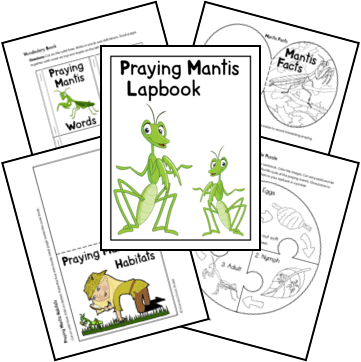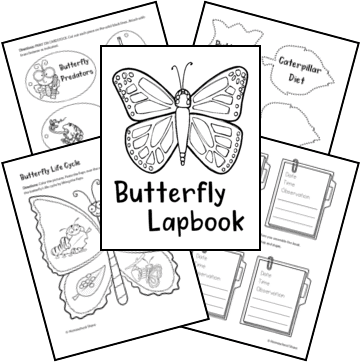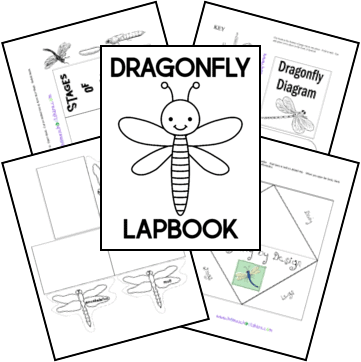Affiliate Disclaimer
We sometimes use affiliate links in our content. This won’t cost you anything, but it helps us to keep the site running. Thanks for your support.
Grab this Arthropod Unit Study and your students will learn what makes an animal an arthropod, the classes of arthropods, and information about some of the amazing animals in this group.
Notebooking pages and printables are included for lots of the creepy crawly creatures in this group: praying mantis, moth, spider, crab, scorpion, millipede, and centipede.
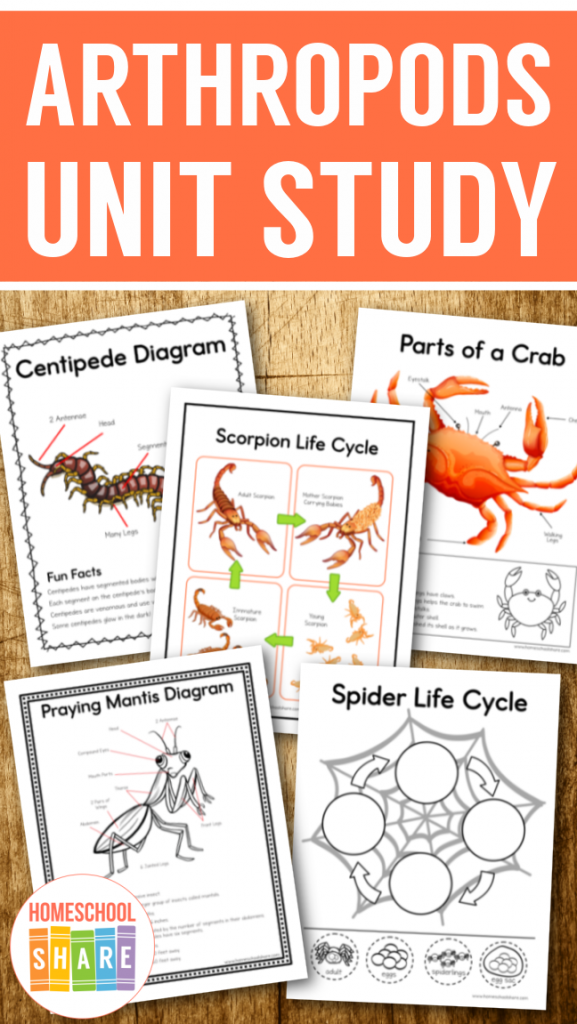
Thanks to Debbie Palmer for preparing the research for this Arthropods Unit Study.
Arthropods Unit Study Lessons
This unit study includes lessons and notebook pages for studying arthropods.
Here is a sample of the lessons found in this Arthropods unit study:
Introduction
Arthropods are the most successful animal group on the planet. They make up about 80% of the world’s animals. They range in size from less than a millimeter to the giant Japanese spider crab that has a leg span of 12 feet. They live in almost every habitat on earth.
Characteristics
“Arthro” means jointed and “pod” means leg. All arthropods have jointed legs. Other characteristics that they share in common are:
- Their bodies are segmented.
- Most have many legs. Insects have six legs while spiders have eight. Millipedes can have hundreds of legs.
- They are bilaterally symmetrical.
- They have an exoskeleton. An exoskeleton is an outside skeleton. It is like armor, and it protects the arthropod’s body.
- Most have external eyes. These eyes are often compound eyes.
- Their circulatory system is open. This means that there are no blood vessels, but rather the organs are bathed with blood.
- Arthropods are cold-blooded. Their body temperatures depend on the temperature of the environment.
- All arthropods molt; they shed their exoskeletons in order to grow.
- Most lay eggs except scorpions. Their eggs hatch in their bodies.
Segmented Bodies
Arthropods have segmented bodies. The segments are normally the head, thorax, and abdomen. Spiders and some crustaceans have a cephalothorax in which the head and thorax are one part. Other arthropods, such as centipedes, only have two body parts.
Classification
Kingdom: Animalia
Phylum: Arthropoda
Classes:
- Arachnida: spiders, ticks, mites, scorpions
- Crustacea: lobsters, crabs, shrimp, barnacles
- Insecta: all insects (six-legged)
- Chilopoda: centipedes
- Diplopoda: millipedes
Crustaceans
Crustaceans have body segments and many legs (at least ten). They often have claws and antennae. Most of them live in water.
Chilopoda
Centipedes have a pair of legs on each body segment. They are flat and wiggle from side to side. They are carnivores.
Diplopoda
Millipedes have two pairs of legs on each body segment. They do not wiggle like a centipedes do. They tend to be herbivores or scavengers.
Arachnids
Arachnids include true spiders, harvestmen (daddy longlegs, which are not true spiders), scorpions, ticks, mites, horseshoe crabs, and sea spiders. They have eight legs and 2 body parts (a cephalothorax and an abdomen).
Insects
Insects are the largest group of arthropods and of all animals! This class is so big that insects are divided into more than 25 orders. Insects have six legs and a 3-segmented body. The head has two antennae and usually two main eyes that are compound.
To access all of the lessons and notebook pages for this unit study, subscribe to Homeschool Share’s email list using the form in this post.
Arthropods Notebook Pages
This study includes a variety of notebook pages for your student. Simply pick and choose the printables that best suit your student’s needs.
General Arthropods Notebook Pages
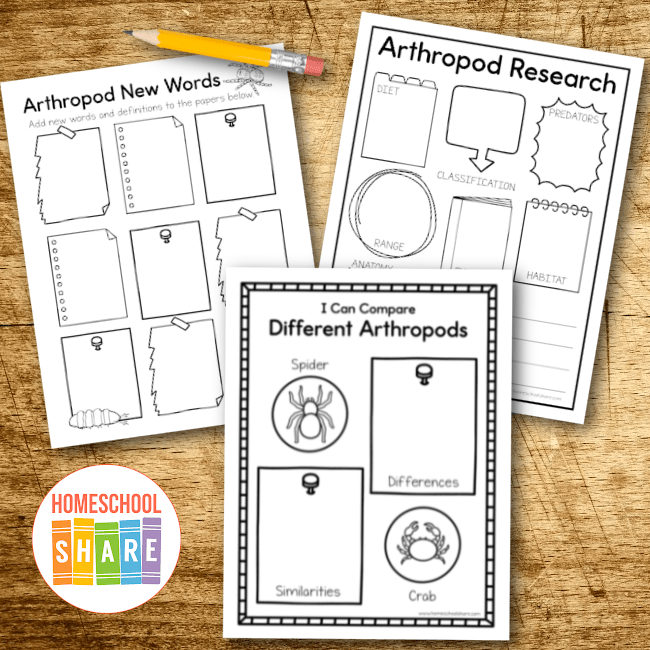
- Arthropod New Words Vocabulary Page
- Arthropod Research Page (choose any arthropod to research)
- What Is an Arthropod Writing Page
- Arachnids List Notebook Page
- I Can Compare Different Arthropods Notebook Page
- I Can Compare Different Insects Notebook Page
Centipede and Millipede Notebook Pages
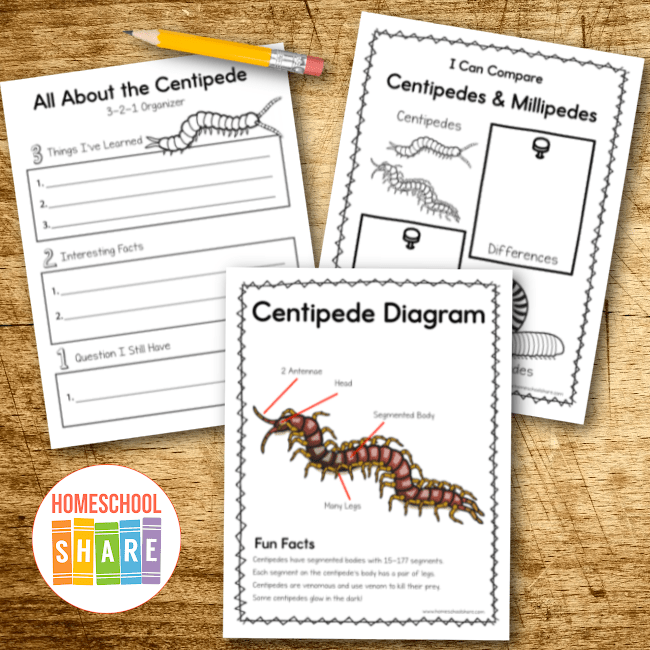
- Centipede Diagram
- Label a Centipede Activity Page
- I Can Compare Centipedes and Millipedes Activity Page
- All About the Centipede 3-2-1 Organizer
- Millipede Facts Notebook Page
Spiders Notebook Pages
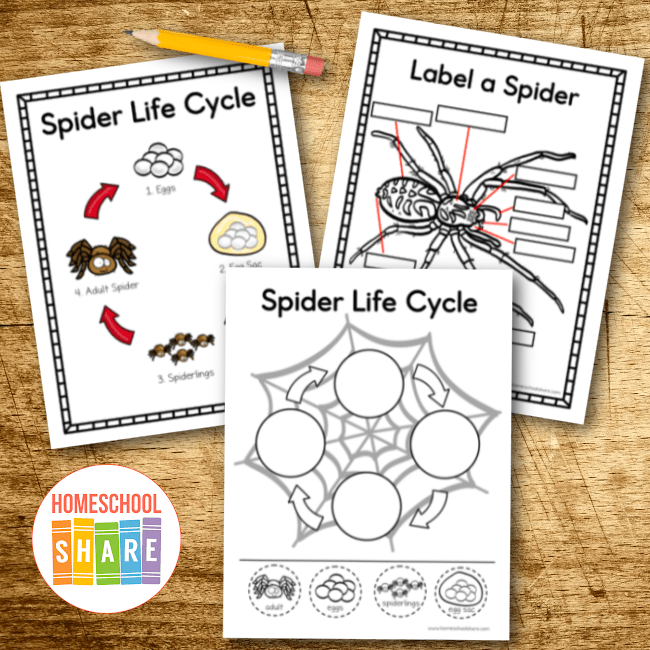
- Spider Life Cycle Diagram
- Spider Life Cycle Activity Page
- Spider Body Parts Diagram
- Label a Spider Activity Page
- All About the Spider 3-2-1 Organizer
Crab Notebook Pages
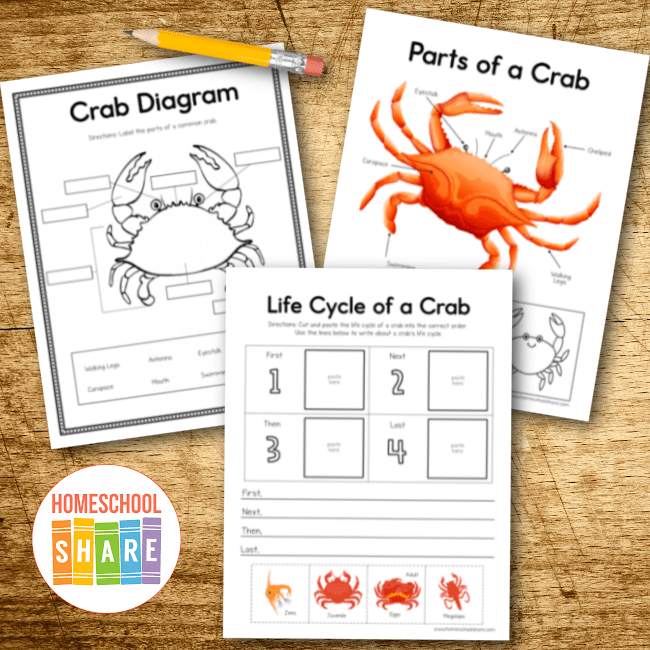
- Crab Life Cycle Diagram
- Crab Life Cycle Activity Page
- Parts of a Crab & Crab Fun Facts Page
- Label a Crab Activity Page
- Crabs Notebook Page
- All About Crabs 3-2-1 Organizer
- Crab Facts Notebook Page
Praying Mantis Notebook Pages
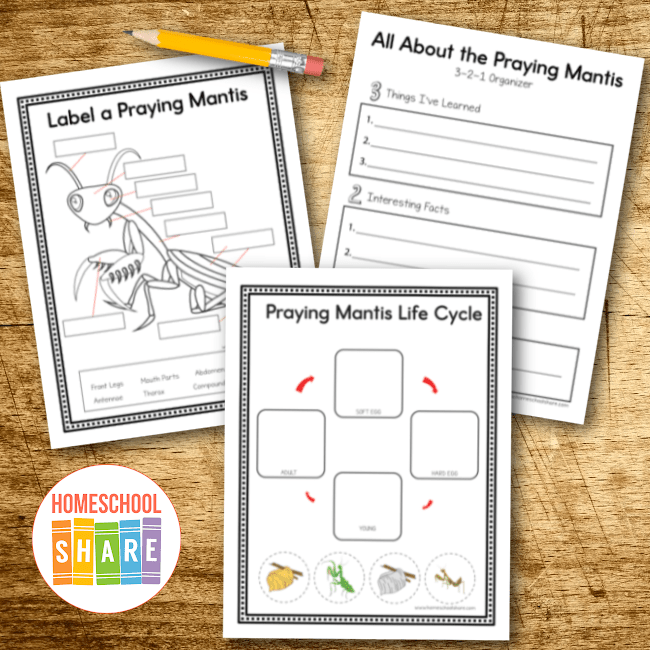
- Praying Mantis Life Cycle Diagram
- Praying Mantis Life Cycle Activity Page
- Praying Mantis Life Cycle Wheel
- Praying Mantis Body Parts Diagram
- Label a Praying Mantis Activity Page
- Label a Praying Mantis Leg Activity Page
- Praying Mantis Facts Notebook Page
- Praying Mantis 3-2-1 Organizer
Moth Notebook Pages
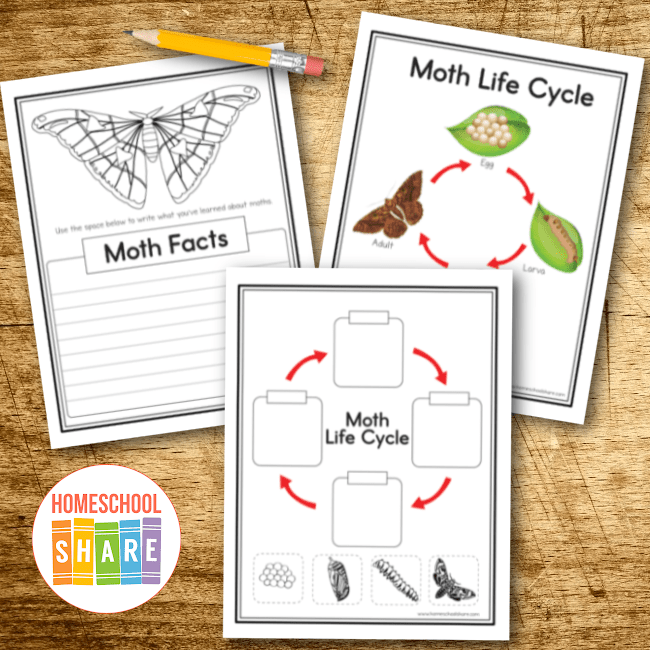
- Moth Diagram
- Label a Moth Activity Page
- Moth Life Cycle Diagram
- Moth Life Cycle Activity Page
- Moth Facts Notebook Page
Scorpion Notebook Pages
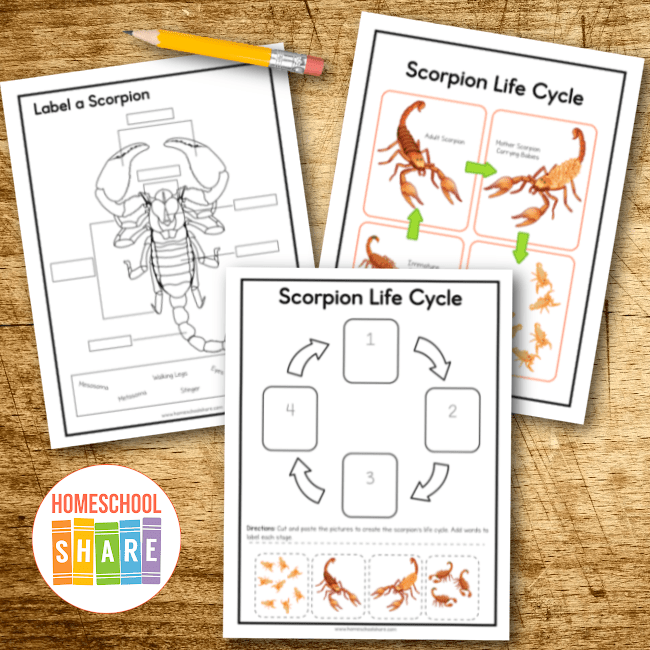
- Scorpion Diagram
- Label a Scorpion Activity Page
- Scorpion Life Cycle Diagram
- Scorpion Life Cycle Activity Page
- Amazing Scorpion Facts Notebook Page
- Scorpion Coloring Page
How to Get Started with the Arthropods Unit Study
Follow these simple instructions to get started with the unit study and printables:
- Check out books about arthropods from your local library. Remember, this class of animals includes all insects, crabs, lobsters, shrimp, centipedes, millipedes, spiders, ticks, and scorpions. You may want to make sure you have at least one book for each of these animals (in order to complete the printable activity pages): praying mantis, moth, crab, spider, scorpion, millipede, and centipede.
- Print the Arthropods Unit Study.
- Choose the lessons you want to use with your student (a highlighter works great for this).
- Choose the printable activity pages you want to use.
- Enjoy learning all about arthropods.
Download Your Arthropod Unit Study
Subscribe to the newsletter using the form below to access your Arthropods Unit Study and Printables.
Learn More About Arthropods
Grab one of these studies and learn even more about arthropods.

